Have you found yourself asking the question “Is Pinterest still relevant for my business?” You’re not alone. Let’s go there.
There’s no doubt that Pinterest has changed. Marketers see it and so do pinners.
Let’s walk through a little bit of history on Pinterest and talk about what’s working right now as the platform iterates itself into Pinterest 2.0.
I recently hosted a live training about what’s working on Pinterest right now. It was designed to answer a pressing question that is currently on the minds of many Pinterest marketers:
Is Pinterest still relevant?
I think it is. Let’s talk about the 3 things that are working right now on Pinterest.
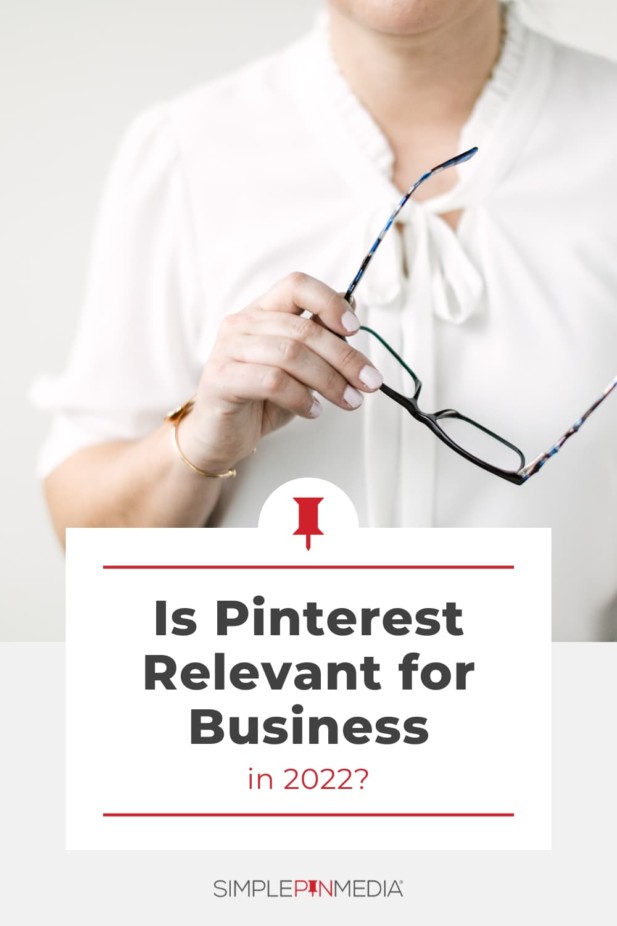
For Pinterest marketing, the goal is to get in front of the dreamers, the planners, and the people who will connect with what you have. It’s all about connecting with the searchers looking for their best life without all the noise.
Pinterest is the outlier among the social media marketing tools.
Related: The Transition from Facebook Marketing to Pinterest Marketing
Facebook is for groups, heated discussion, and reminders that it’s someone’s birthday.
TikTok is great for dancing, engagement, and I’m not really sure what else since I’m still trying to avoid it.
Pinterest is for the introvert and person searching for an answer to their problem. It’s a search and discovery network whose reason for existing is to promote ideas and products for those looking to be inspired. Platform users spend a long time planning and searching before they actually make a purchase (at least three months).
This recent quote from Pinterest sums it up perfectly:
Your customer isn’t coming to Pinterest to hunt for likes, or see what everybody else is doing. They’re looking to find what they actually love.
— Pinterest
In a recent article on the Pinterest business blog, Pinterest said that people who use Pinterest weekly are 7x more likely to say it’s the most influential platform in their purchase journey vs. social media platforms.. Furthermore, shoppers on Pinterest have 85% bigger baskets than shoppers on other platforms and they spend twice as much per month.
I don’t know about you but I’m happy to help you figure out how to be part of that spend.
In the golden days of Pinterest, you would pin a beautiful image to your board, keyword the pin description, and then share it across several Pinterest boards. Then you would sit back and watch your traffic grow (as well as your ad revenue, email list, and product sales).
It was a simple platform with a beautifully orchestrated plan for marketing that resulted in great traffic.
When the pandemic hit in 2020, a surge of people flooded the platform, growing it to over 400 million users worldwide. Those sourdough bread recipes were being pinned faster than teenagers checking Snapchat. We could see the clicks rising and the businesses being positively impacted.
And then in 2021, Pinterest changed.
They added more shopping features like:
- the Verified Merchant Program
- Idea pins (formerly story pins)
- videos that play in a vertical format.
What was once a simple platform to figure out, became a nightmare. Traffic started plummeting and people wondered if the platform was worth using anymore. People were downright frustrated and confused.
Enter fall 2021 and we’re at a crossroads. It’s our car windshield moment for Pinterest marketing.
Using the old Pinterest marketing tactics is like using the rear-view mirror in your car. It’s important to look back and see how far you’ve come, but if you stare too long you’ll crash.
It’s time to look through the big windshield and embrace the new Pinterest features and leverage them for our benefit.
That leaves us with the question:
What’s Working on Pinterest Right Now?
In order to answer this question, I surveyed a lot of expert Pinterest marketers.
First, I asked our Account Specialists. At Simple Pin Media we provide organic Pinterest management services to over 100 clients. If anyone is on the front lines and could give me a consensus of what was working, it’s our account specialists.
Second, I examined what was working for me on my own account. I had slowed down on pinning regular pins. Was that working?
The conclusions I’m about to present are a compilation of what I discovered from these conversations. It’s not exhaustive, but it gives some examples of the themes I kept heard consistently from my sources.
1. A Pinterest Marketing Mind Shift
All the people I talked to finally embraced the new features on the Pinterest platform.
Hear me out here. Everyone I talked with finally gave up on Pinterest being “easy” like it was before and started to embrace the new features — particularly idea pins and video.
Related: Video Creation Tools for Creating Pinterest Videos
Pinterest isn’t what it used to be and you can’t track the information like you did before.
2. using a diversification strategy on pinterest
Gone are the days of one type of pin and all you had to do was get creative with your graphics.
Quality Pinterest images are still important, don’t get me wrong but here’s how we have to see Pinterest now. As a platform with four different pin formats that lead to our ideal reader or customer.
Here are the four pathways via the four pin formats:
- Static Pins – show the closeup or lifestyle
- Idea Pins – lead to audience growth and engagement
- Video Pins – show the dimension of the product or the steps of how to create
- Pinterest Ads – help to target your audience quickly so you can get in front of them when they search.
Successful Pinterest marketing now must included diversification. Why? Because pinners may favor different pin formats when they search.
Here’s what hasn’t changed on Pinterest – pinners’ intent and search habits with a long-tail marketing benefit.
Most trends on the Internet last about six months – and then fade out. But not on Pinterest. A recent study conducted by Black Swan found that trends sustain monthly growth for more than 20% longer on Pinterest compared to trends on the rest of the Internet.
In other words, they’re not just a flash in the pan. This means that brands and creators who feature these trends benefit from content with a longer lifespan.
Use all these pin formats together to create a great strategy for getting in front of your audience when they are on the hunt for the perfect pin.
3. Consistent content creation
Content creates growth and warms your audience up.
What do we mean by content?
It is something that talks, tells, explains, warms up, and humanizes your brand. It’s not just a picture of your product that you slap up on Pinterest.
We’ve witnessed this phenomenon for years. Pinterest users are typically cold and you need to figure out a way to warm them up to your brand.
We’ve found that clients who regularly create content at least 1x per week see an increase in traffic, sales, and leads.
One of our Simple Pin account specialists described a client who has not created content for at least a year. The client’s traffic has dropped dramatically over the course of a year. Over the past two months, the account specialist began creating two idea pins per week and she’s now seeing an increase in traffic to that client’s website.
When we advocate creating regular content, please don’t interpret this to mean that you need to create a crazy long blog post.
Think of:
- providing quick tips
- answering questions you get in your email
- creating FAQ posts
- Creating idea pins (essentially micro content)
- Telling your story.
Why in the world did you create the product you want everyone to buy? Tell people the story so they will better connect with your brand (read more about using your personal story as a Pinterest marketing strategy here.)
To fulfill Pinterest’s demand for regular content, create a content calendar that helps you to stay focused and on track. Then it won’t feel like a daunting task.
Idea Pins
Before anyone rolls their eyes, listen up. I have a ton of data that demonstrates that idea pins work. They are beneficial in so many ways. T
They help you to:
- get more eyeballs on your content
- increase Pinterest followers
- build brand awareness
- grow engagement.
Why the recent focus on idea pins? Let’s dive into a little bit of history in order to understand.
Pinterest has to appeal to advertisers. And to appeal to them means keeping people on the platform longer. The longer a user remains on the platform, the more advertising dollars Pinterest earns. They have to pay their bills just like you do.
That means idea pins don’t link directly to a webpage but they can be saved to a board for later. Bonus – they don’t expire after 24 hours. They live on the boards they are pinned to and they are seen in the home feed and search.
Pinterest is prioritizing this feature now, which means we should prioritize as well in our Pinterest marketing. So how do you do that?
You’ve heard me talk in recent podcasts about the experience of idea pins for marketers. They are working.
I’ve also heard the rumor that people are deleting idea pins after they create them. This is to force an increase in impressions. I’ve seen some stats to show this may work to inflate impressions but why would you spend all this time creating an idea pin just to remove it?
I don’t know about you but I care about clicks, saves, and long-term traffic from Pinterest. What we know about Pinterest is that pins, even idea pins, can get seen in search or the feed days, even months after we post them.
So honestly, why would I delete all that hard work and miss out on future opportunities?
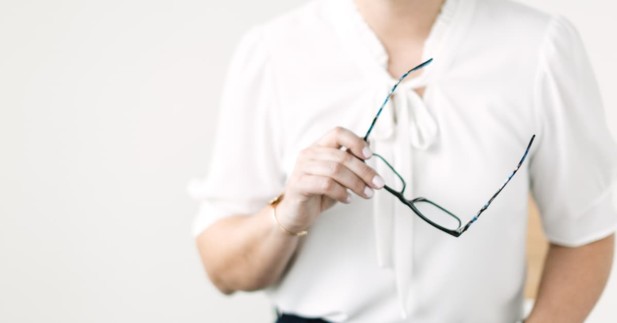
So back to the original question — is Pinterest still relevant?
In order to answer this question, you need to address some other questions:
- Are your people still using the platform?
- Do your customers use it for search?
- Is marketing on Pinterest part of your marketing suite and strategy?
If the answer is no to all of those questions, then Pinterest is not relevant for your business anymore. Maybe your person is now only on TikTok. If that’s the case, invest your marketing dollars there.
If you answered yes to all those questions, it’s time to embrace the new and find a way to continue to use the platform without it sucking the life out of you. And I don’t believe it has to!
Over 2022, we’re going to be incorporating more live trainings as well as masterclasses. We will still continue with our organic Pinterest marketing and our Ads Society for paid Pinterest marketing.
We’re here to help you with this shift on the Pinterest platform each and every step of the way in 2022.
For Further Listening/Reading:
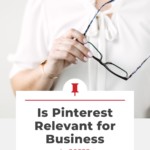
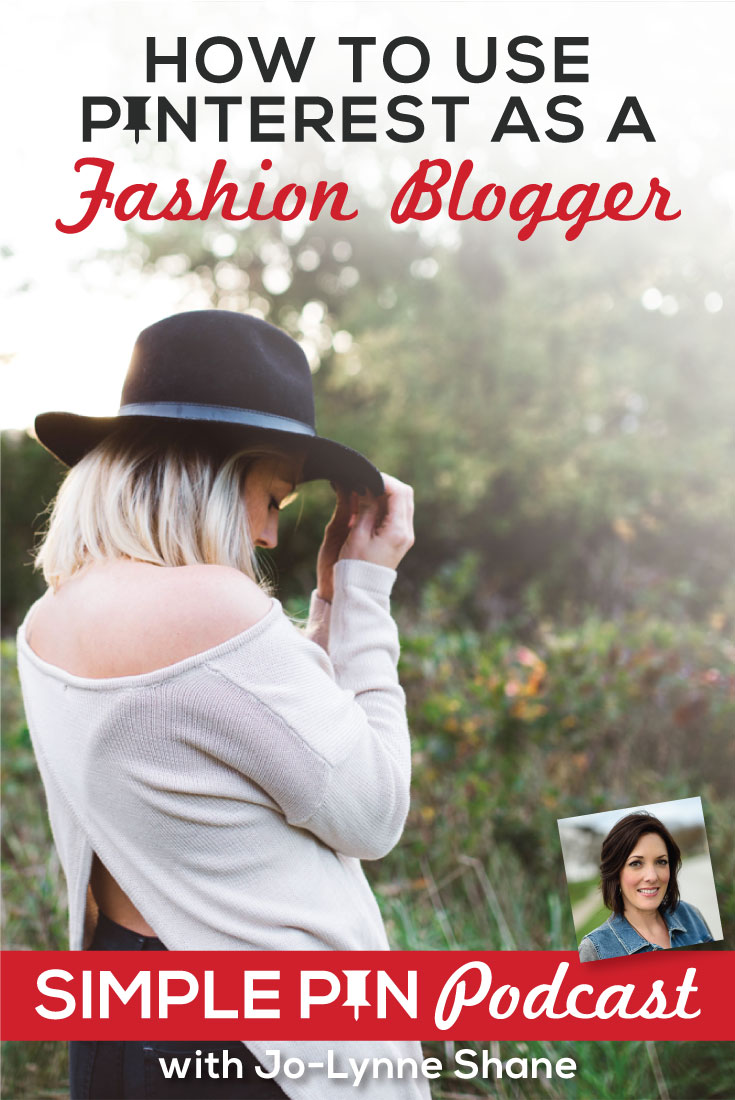




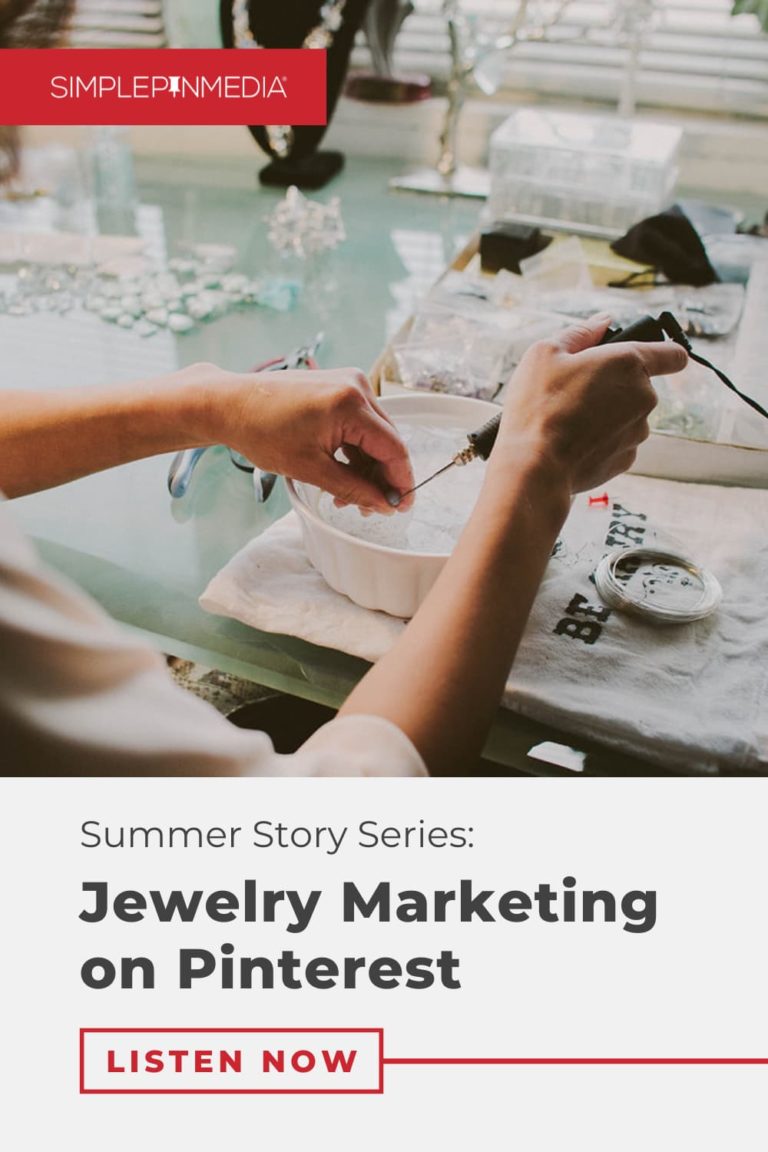

I liked this episode! But Kate, you must get to know Tiktok more. It’s more than just dancing. You can learn so much and that’s why it’s in direct competition with all of social platforms including Pinterest. In my opinion, as content creators, we have to be aware of what other platforms are doing so we don’t get left behind. That’s why Pinterest is focusing so hard on idea pins and video content. That’s why they added a watch tab. It’s why they put emphasis on audience types like Gen Z. If you study the anomaly that is Tiktok, you’ll learn a lot about where the market is going. I know your focus is Pinterest, but by studying Tiktok, I believe it will help us better overall understand the Pinterest changes and be able to pivot better. Don’t throw the baby out with the bath water!
You’re absolutely right Olivia! We have team members who keep their finger on the pulse of the other platforms so that I don’t personally need to 🙂
Hello, I hope that my question is something you may be able to help me with, I once modelled for someone who makes historical costumes in the UK, I gave her permission to use them on her website but after a few years I changed my mind & withdrew my permission, she ignored this & went on to set up a Pinterest account & posted 60 of the photo’s of me on it modelling her period dresses, again she didn’t ask my permission & refuses to remove/delete them saying that the photo’s belong to her legally & that there’s nothing I can do about it, as you can imagine this is very frustrating for me, I am worried that these photo’s may well be on Pinterest for years if not forever! Please could you share any thoughts or advice on what I can do about it.
Best wishes & many thanks, Lucy.
Hi Lucy, I’m sorry that you are going through this!
Our advice regarding your images on Pinterest would be to check out this article about Trademarks: https://policy.pinterest.com/en/trademark#:~:text=While%20the%20trademark%20complaint%20form,think%20the%20complaint%20is%20invalid.
The article explains how you can get a hold of Pinterest when things of this matter happen.
I want to express my appreciation for the writer of this blog post. It’s clear they put a lot of effort and thought into their work, and it shows. From the informative content to the engaging writing style, I thoroughly enjoyed reading it.
Thanks so much for your positive feedback!!